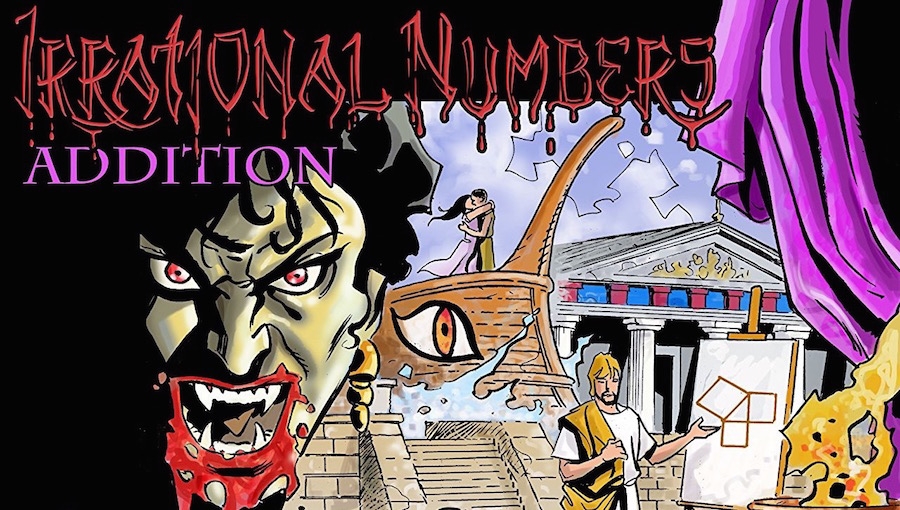Remember high school geometry? How about the mathematical formula a2 + b2 = c2, otherwise known as the Pythagorean theorem? Other than being taught that the theorem was developed by a Greek mathematician by the name of Pythagoras, it’s likely that little else was revealed during the math lesson about this philosopher that lived from 570 B.C. to 495 B.C. – for example, that he founded the Pythagorean school, or that his accomplishments are marred by controversy. (Was Pythagoras the progenitor of his ideas or his colleagues?)
SPOILERS BELOW
Last month, Wunderman Comics published an alternate history tale written by the 2012 Top Cow Talent Hunt winner, Hannibal Tabu. Tabu is joined by artist Giancarlo Caracuzzo, colorist Flavia Caracuzzo, letterer Josephine Roberts, and editor Nate Wunderman for Irrational Numbers #0: Addition. Tabu’s story opens on the Island of Samos, where Pythagoras is from. Walking past a slave merchant, Pythagoras purchases a temperamental youth named Zalmoxis who becomes a student of Pythagoras when he establishes his school. The pair travel the ancient world together, as Pythagoras searches for answers to his mathematical questions. After some years, Sofia and Medea become acquainted with the men. While Pythagoras goes traveling to seek out answers to new questions, the women and Zalmoxis engage in a secret ritual that changes their physiology so that they become vampires. When Pythagoras returns to his school, the dynamics have changed, and he is no longer the teacher.
Historical stories have the potential of being an engaging read. Not only does it provide an opportunity to learn about a historical period or character, if written well, the tale will hopefully spark at least a visit to Wikipedia to find out more. Typically, these tales take a historic (Read: heroic.) figure as the protagonist for the revisionist tale, so the choice of Pythagoras at first seems unusual; however, Tabu spins a gripping story about a philosopher – a mathematician at that! – and gives it a supernatural twist during the climatic third act. He explores Pythagoras and Zalmoxis’ travels to Egypt and other ancient locales, where the pair seek mathematical enlightenment. Written with an obvious interest in the subject matter, Tabu tells a fascinating journey that our high school geometry class never did.
Giancarlo and Flavia Caracuzzo complement each other well. An ancient visual tone is conveyed through Giancarlo Caracuzzo’s artistic style, which utilizes stereotypical motifs through character costume choices and the décor of interior scenes. The layout of panels is straightforward and in keeping with a traditional feel of the visuals; it works well. Flavia Caracuzzo’s rich color palette – vibrant blues, purples, and greens for instance – brings the ancient world alive and adds to the visual experience. Placement of speech balloons and narrative boxes work with the action and blend with the rest of the visual elements. And lettering choices by Roberts are easy to read and well balanced on each page.
Tabu and his creative team successfully brought to life Ancient Greece and one of the eminent philosophers of the time. A riveting journey, audiences that enjoy alternative history stories should seek this graphic novel out.

